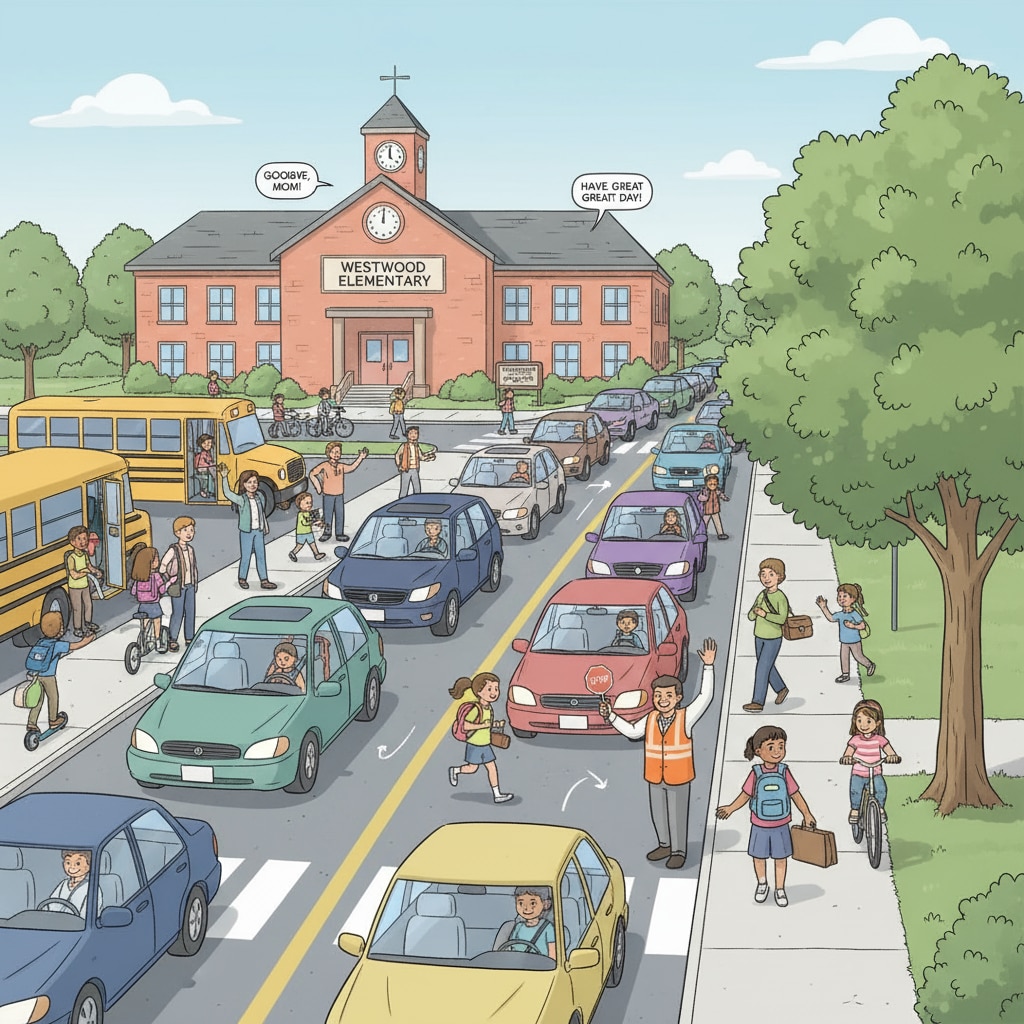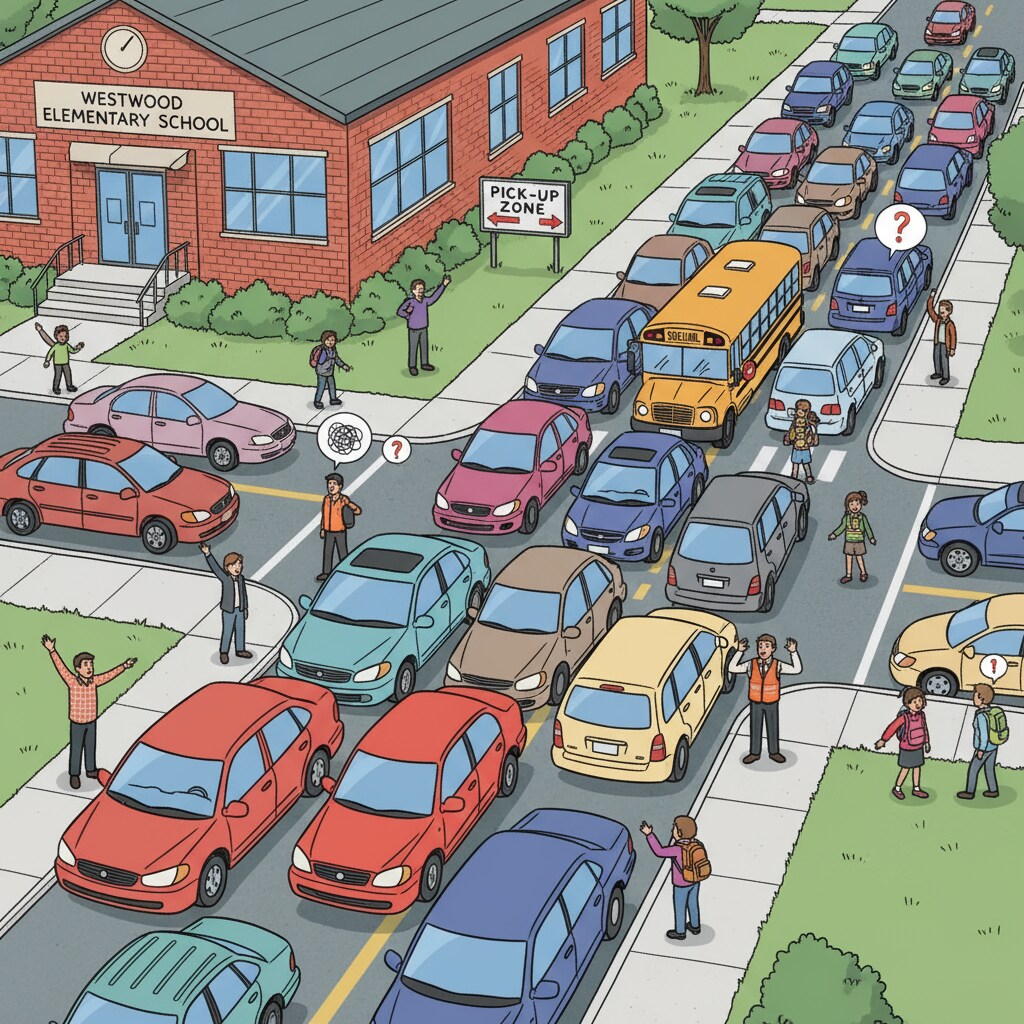The issue of school drop-off and pick-up, traffic congestion, and school bus system has long plagued small towns. The traffic chaos around schools during peak drop-off and pick-up hours is not only a headache for parents but also a challenge for school management.

The Current Pain Points of School Drop-off and Pick-up
One of the main problems is the lack of a well-organized traffic flow. Parents often park haphazardly, blocking lanes and causing gridlock. For example, in many small town schools, there are no designated waiting areas, so cars stop randomly on the roadside. This not only slows down traffic but also poses a safety risk to students. In addition, the school bus system may be outdated or insufficient. Some buses may be old and in need of maintenance, and the routes may not be optimized to serve the maximum number of students efficiently. Traffic congestion on Wikipedia

Optimizing the School Bus System
To improve the situation, optimizing the school bus system is crucial. First, schools can invest in new, environmentally friendly buses that are safer and more comfortable for students. Updating the fleet can also enhance the overall image of the school. Second, route planning should be reevaluated. By using modern mapping tools and data analysis, schools can design bus routes that cover more areas and reduce the number of stops. This will not only save time but also reduce traffic on the roads around schools. For instance, some schools have successfully implemented dynamic route adjustments based on student population changes. Transportation system on Britannica
Another aspect is to improve the scheduling of school buses. By staggering the pick-up and drop-off times for different grades or schools in the area, traffic congestion can be alleviated. For example, elementary schools can start and end classes earlier than middle and high schools, which can spread out the traffic flow during peak hours.
Readability guidance: As we can see, the problems in the current school drop-off and pick-up system are multifaceted. By focusing on optimizing the school bus system, we are taking an important step towards solving the traffic congestion issue. In the following sections, we will explore more solutions.
Staggered Drop-off and Pick-up Times
Implementing staggered drop-off and pick-up times is an effective way to reduce traffic congestion. Schools can divide students into different groups based on grade levels, classes, or neighborhoods. Each group will have a specific time slot for drop-off and pick-up. This way, the number of cars arriving and leaving the school at the same time is significantly reduced. For example, one-third of the students can be assigned to an early drop-off time, another third to a middle time, and the last third to a late time. This spreads out the traffic load and makes the flow smoother.
In addition to grade-based staggering, schools can also consider neighborhood-based arrangements. Students from the same neighborhood can be grouped together and picked up or dropped off at a central location within the neighborhood. This reduces the number of individual car trips to the school and further eases traffic pressure around the school.
Readability guidance: Staggered drop-off and pick-up times offer a practical solution. However, effective communication with parents is essential to ensure smooth implementation. In the next part, we will look at how technology can play a role.
Intelligent Traffic Management
With the development of technology, intelligent traffic management systems can be introduced to improve the school drop-off and pick-up situation. For example, installing traffic sensors near schools can monitor traffic flow in real-time. Based on the data collected, traffic lights can be adjusted to better manage the flow of vehicles. If there is a sudden increase in traffic during drop-off or pick-up, the traffic lights can extend the green light time for the direction of the school.
Another application of technology is the use of mobile apps for parents. Parents can use these apps to receive real-time information about traffic conditions around the school, such as congestion levels and available parking spaces. Some apps can also allow parents to notify the school when they are approaching, enabling schools to arrange for a more organized pick-up process.
Readability guidance: Intelligent traffic management provides innovative ways to deal with the traffic problems related to school drop-off and pick-up. By combining these technological solutions with other strategies, we can create a more efficient system.
In conclusion, the problems of school drop-off and pick-up, traffic congestion, and school bus system in small towns require comprehensive solutions. By optimizing the school bus system, implementing staggered drop-off and pick-up times, and introducing intelligent traffic management, we can transform the current traffic nightmare into an efficient and safe school transportation environment. This will not only benefit students and parents but also contribute to the overall well-being of the small town community.


